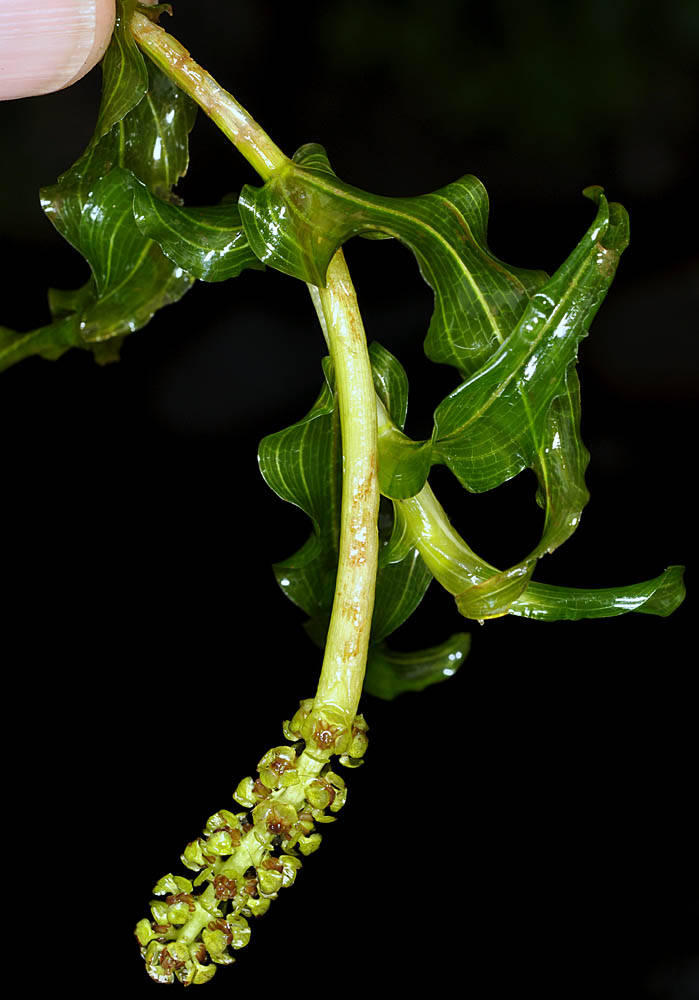Potamogeton richardsonii
Potamogeton clystocarpus
clasping-leaved pondweed, Richardson's pondweed
terete; to 100 cm; nodal glands absent.
submersed, sessile, attached at stem nodes, not attached to stipules;
stipules 1.2– 1.7 mm, fibrous, disintegrating to persistent fibers; even on proximal portion of stem;
tip shredding, obtuse;
blades ovate-lanceolate to narrowly lanceolate, 1–12 cm, 10–20 mm wide;
base rounded, clasping;
margins entire to wavy;
tip acute to obtuse; lacunae absent;
veins 3–35.
emersed;
spikes cylindric, 13–37 mm;
peduncles terminal or axillary; erect to rarely recurved, 15–148 mm.
sessile, obovoid; turgid to concave, 2.2–4.2 × 1.7–2.9 mm; greenish brown, rarely dorsally keeled;
beaks erect, 0.4–0.7 mm.
Potamogeton richardsonii
Potamogeton clystocarpus
Alkaline lakes, streams, and rivers. 0–2400m. BR, BW, CR, ECas, Est, Lava, WV. CA, ID, NV, WA; north to Northwest Territories, east to CT. Native.
This species hybridizes with P. gramineus and P. nodosus.
Nick Otting, Richard Brainerd, Barbara Wilson
- Local floras:
BC,
CA,
OR,
WA
- Local Web sites:
CalFlora,
CalPhotos,
Flora NW,
PNW Herbaria
WildflowerSearch
iNaturalist (observations)
USDA Plants Database
- LBJ Wildflower Center
- SEINet
- Plants of the World Online
- Encyclopedia of Life
- Wikipedia
- Google Image Search



